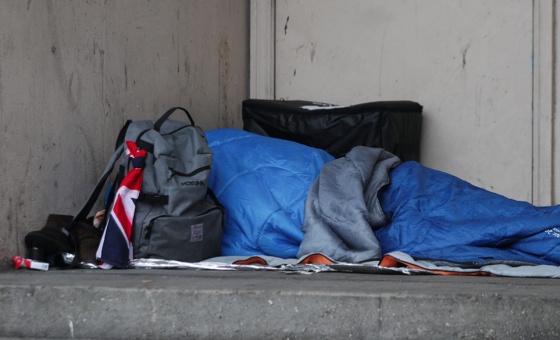This is the last article you can read this month
You can read more article this month
You can read more articles this month
Sorry your limit is up for this month
Reset on:
Please help support the Morning Star by subscribing here
IN the latter half of 2022 there was a record number of evictions.
The number of landlords asking the courts for homes to be repossessed increased from 14,436 to 20,460, which is up 42 per cent in one year.
Court orders for homes to be repossessed increased by 135 per cent and warrants for county court bailiffs doubled.
A large number have been evicted by using Section 21 of the 1988 Housing Act.
According to the government figures, the number of households living in privately rented homes in England who were evicted by bailiffs because of Section 21 proceedings has increased by 143 per cent in a year — from 792 households between October-December 2021 and 1,924 between October and December 2022.
The figures also show 6,101 landlords in England started Section 21 no-fault eviction court proceedings between October and December 2022 — up 69 per cent in a year, and 47 per cent on the same period in 2019 before the pandemic eviction ban was put in place.
Just as the number of evictions has been rising, the availability of rental homes has been falling.
With such conditions, evicted tenants face an often impossible situation. But a number of those evicted also face another challenge, and that is to find not only a home but one that is accessible as well.
Finding an accessible home for rent is a difficult task. For people who have spinal cord injuries, it is even harder. To get the right place that meets their needs can take a long time.
But at present, those evicted don’t have the luxury of time. Instead, they are thrown into a housing market where the lack of supply and high demand mean the chance of finding one of these elusive accessible rented properties is extremely low.
This forces these people, including those with spinal cord injuries, into unsuitable and often unsafe, temporary accommodation.
The charity Justlife that advocates for people who are the “hidden homeless” living in temporary accommodation, has produced an important report alongside Shared Health Foundation looking at the state of temporary accommodation in England.
In this report it revealed the desperate conditions in which adults and children were living, with mould, overcrowding and multiple health and safety risks — yet this is mostly unseen.
That is why it is calling for regulation of temporary housing, because “a growing population are trapped in temporary accommodation, which is substandard, suffering additional avoidable hardship as a consequence.”
It believes the time for action is now: along with the call for regulation, it gives six other key points to help improve the living circumstances of the 99,270 people who are currently living in temporary accommodation.
One of the areas it looked at in the report, was the predicament faced by those with disabilities who were living in temporary accommodation.
Signe Gosmann, the lead disability researcher from Justlife, said: “The environment in temporary accommodation is often disabling, exacerbating symptoms and experiences of disability. It’s a vicious circle. Disability can leave you more vulnerable to homelessness, and once homeless, you can get stuck in an environment that is further disabling.
“The added stress of not being able to do basic things like leaving your room or accessing the shower on a different floor, takes a heavy toll on people’s physical as well as mental health.”
Chris, who has spinal cord injuries, found himself homeless in October, and since then has been stuck indoors in a temporary accommodation building.
The first problem was the bathroom: “The door had to come off because I couldn’t get in it, but it’s still difficult to use.”
The next problem was how to get out of the building. The only exit was through a back door, but this was totally inaccessible for Chris.
After a long time waiting it was “adapted” but it still means Chris can’t get out unless he is helped by another person, ultimately trapping him in his room for the last five months.
He doesn’t how much longer he will have to be in this building, the uncertainty and lack of access detrimental to his mental health.
Nik Hartley OBE, the CEO of the Spinal Injuries Association, said: “Chris rang our support line in desperation — a prisoner in his own home with no end in sight.
“A safe home adapted to meet your needs is the fundamental right of every spinal cord injured person in the UK but sadly hundreds like Chris call us week in week out.
“How can the Spinal Injuries Association’s objective of a fulfilled life for everyone be achieved when you can’t even use your own bathroom or leave your home without asking for help? Rental housing is in crisis for disabled people; reform is urgent to avoid this unsafe situation.”
Breaking records usually calls for a celebration, but the record figures for those evicted and facing eviction is yet another indication of how skewed the housing market is, with the most vulnerable who don’t have a stable home, facing an uphill struggle to even be acknowledged let alone housed somewhere that is safe and accessible.
The call from Justlife for this sector to be regulated is an important first step — but will this government, which is dragging its feet in terms of reform, be willing to take it?
Justlife can be found at Justlife.org.uk and the Spinal Injuries Association can be found at Spinal.co.uk. Anyone worried about losing their home can contact Shelter for free advice at www.shelter.org.uk.
Ruth F Hunt is a freelance journalist and author.











